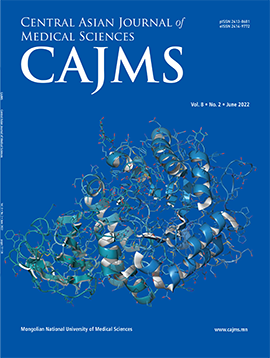A Study of Relationship between Post Stroke Epilepsy and Solar Activity
DOI:
https://doi.org/10.24079/cajms.2018.03.011Keywords:
Solar Activity, Intracranial Hemorrhage, Epilepsy, Mongolia, MortalityAbstract
Objective: Symptomatic seizure or post-stroke seizure are the most common seizure subtypes among the elderly. The purpose of our study was to better understand post-stroke epilepsy in relation to their cerebral location, and to find a possible link between epileptic seizure after stroke debut and the differences in solar activity. Methods: This retrospective chart review of patients who died from hemorrhagic stroke in Ulaanbaatar, Mongolia. Only patients with a hemorrhagic stroke from periods with relatively high solar activity (2000-2002 and 2013-2015) and relatively low solar activity (2008-2010) were considered. Results: Hemorrhagic stroke affected mainly patients between 45-59 years of age. Post-stroke epilepsy was less prevalent less during decreased solar activity years. Post-stroke epilepsy was more prevalent in patients with subarachnoid hemorrhage and brainstem hematoma and even more prevalent in patients with diabetes (p<0.01). Conclusion: Post-stroke epilepsy was less frequent during low solar activity years. Post-stroke epilepsy with concomitant brainstem hematoma resulted in poor outcomes following stroke.
Downloads
196
Downloads
Published
How to Cite
Issue
Section
License
Copyright (c) 2018 Mongolian National University of Medical Sciences

This work is licensed under a Creative Commons Attribution-NonCommercial 4.0 International License.




